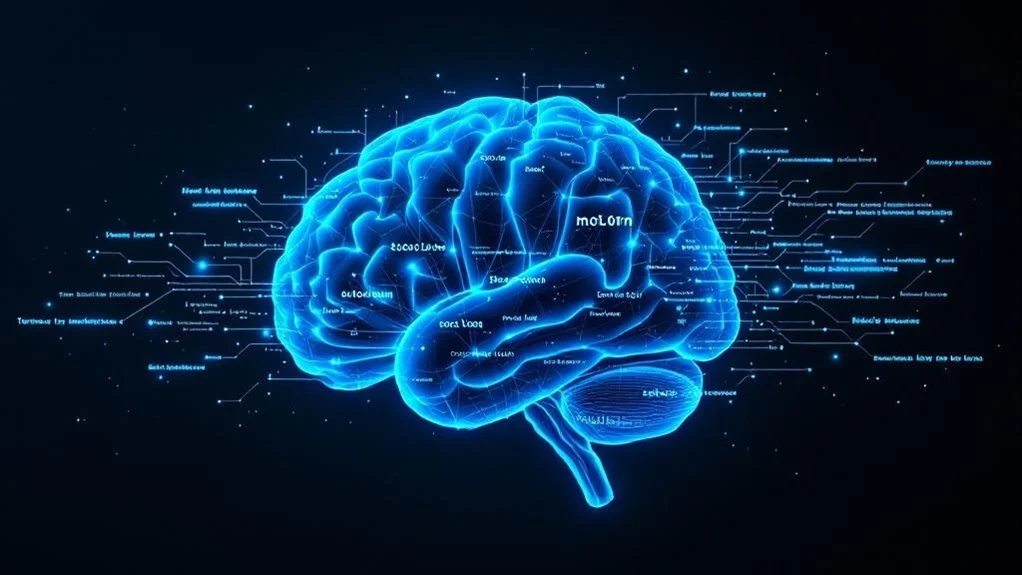Natural language processing (NLP) is a field of artificial intelligence that helps computers understand and work with human language. It combines computer science, linguistics, and machine learning to process both written text and spoken words. NLP powers many everyday technologies like digital assistants, chatbots, and translation services. Modern NLP systems can analyze sentiment, summarize documents, and generate human-like responses. The technology continues to evolve with advances in machine learning and neural networks.

Natural Language Processing (NLP) is a branch of computer science and artificial intelligence that helps computers understand and work with human language. It combines several fields, including computational linguistics, statistics, and machine learning, to process and analyze large amounts of language data. NLP systems can understand both written text and spoken words, making them essential for modern technology.
NLP empowers computers to process human language by combining artificial intelligence, linguistics, and machine learning into powerful analytical tools.
The technology behind NLP relies heavily on machine learning and statistical methods. Instead of following strict rules, computers learn language patterns from vast amounts of data. Deep learning, an advanced form of machine learning, has dramatically improved how well NLP systems work. These systems use neural networks that can recognize complex patterns in language, similar to how the human brain processes information. Early experiments like the Georgetown experiment in 1954 optimistically predicted machine translation would be solved quickly, though this proved premature.
NLP has become a part of everyday life through various applications. Digital assistants like Siri, Alexa, and Cortana use NLP to understand voice commands and respond appropriately. Chatbots help customers with common questions, making customer service more efficient. Translation services use NLP to convert text between languages while maintaining the original meaning and context. Modern NLP systems excel at text preprocessing tasks like tokenization, lowercasing, and removing stop words to standardize text for analysis.
The capabilities of NLP systems are diverse and powerful. They can convert speech to text, classify documents into categories, understand the meaning behind words, and generate human-like responses. They can also identify important information in text, analyze sentiment in social media posts, and create summaries of longer documents. These abilities make NLP valuable for businesses, researchers, and everyday users.
NLP’s development spans more than five decades, with roots in both linguistics and computer science. Scientists have created many tools and libraries to help developers work with NLP, including popular ones like NLTK and PyTorch-NLP for the Python programming language. These resources make it easier for researchers and developers to create new NLP applications.
The impact of NLP extends beyond simple text processing. It’s now used in medical research to analyze patient records, in scientific research to process academic papers, and in business to automate document handling.
As the technology continues to advance, particularly with the development of large language models, NLP’s ability to understand and generate human-like language keeps improving. This progress makes it an increasingly important tool in our digital world, helping bridge the gap between human communication and computer processing.
Frequently Asked Questions
How Much Programming Knowledge Is Required to Start Learning NLP?
Basic Python programming skills suffice for starting NLP. Understanding variables, loops, functions, and data structures enables learners to utilize beginner-friendly libraries like NLTK for initial NLP tasks.
Can NLP Be Used to Analyze Handwritten Text Effectively?
NLP can effectively analyze handwritten text when combined with deep learning models for recognition. It enhances accuracy through context understanding, error correction, and semantic interpretation of digitized handwritten content.
What Is the Average Salary of an NLP Engineer?
NLP engineers earn between $80,000 to $180,000 annually, varying by experience level. Entry-level positions start around $80,000-100,000, mid-level reach $110,000-140,000, and senior roles exceed $150,000-180,000.
How Long Does It Take to Become Proficient in NLP?
Becoming proficient in NLP typically requires 180 hours for certification programs or 100-150 hours through academic courses, with background knowledge in programming and machine learning greatly affecting learning duration.
Which Programming Language Is Best for Beginners Learning NLP?
Python stands as the ideal choice for beginners learning NLP, offering user-friendly syntax, extensive libraries like NLTK and spaCy, strong community support, and seamless integration with machine learning frameworks.


